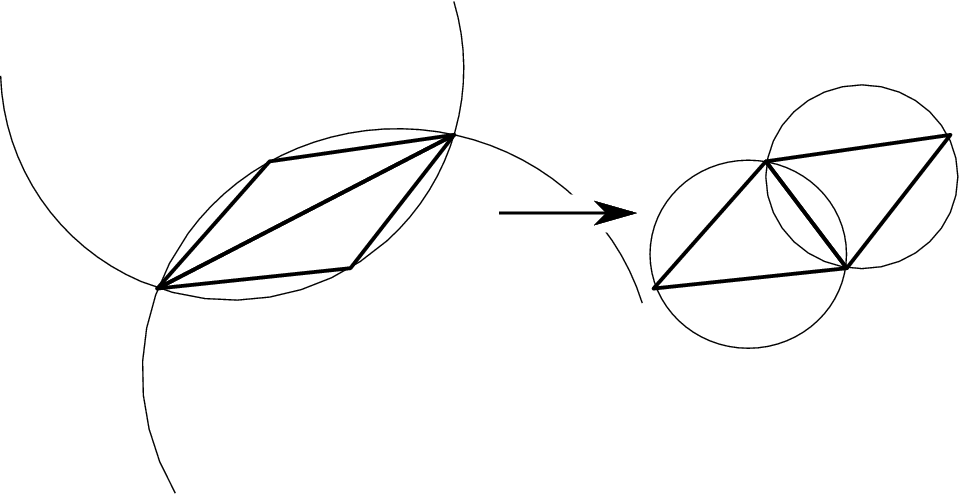Next: 3.2.2 Geometrical Operations Up: 3.2 Mesh Adaptation Algorithms Previous: 3.2 Mesh Adaptation Algorithms Contents

The edge shared by the triangles is flipped to the other diagonal of the quadrilateral which is formed by the union of two triangles. The flipping operation requires the quadrilateral to be convex, otherwise the underlying space changes. In this particular example, the triangles are Delaunay (cf. Section 2.3) after the flipping operation is applied. |
florian 2016-11-21